Many people ask, “Is it better to have heating on low for longer? Or is it cheaper to leave the heating on all day?” At Best Electric Radiators, we believe proper insulation plays a significant role in answering this question. A well-insulated home retains heat better, making it more cost-effective to keep heating low for longer.
The answer depends on how long you need the heating and the condition of your environment. Key factors include the age and quality of your appliance, insulation standards, and thermostat placement. These variables help determine whether constant mild heat or intermittent bursts are best.
Did you know that double-glazed windows, draught-proof doors, and loft insulation can save you money in the long run? These improvements help retain heat, reducing the need to adjust your heating constantly. With our energy-efficient electric radiators, you can achieve a comfortable and cost-effective home environment by maintaining a steady, low heat.
Tip 1: Differences Between Low Continuous Heating vs Higher Bursts
Deciding if it is better to have heating on low for longer or to use higher bursts of heat depends on various factors in your home. Understanding these heating methods is crucial if you’re wondering if leaving the heating on all day is cheaper.
Low continuous heating maintains a steady temperature, which can be more energy-efficient in well-insulated homes. This method prevents the frequent turning on and off of your heating system, reducing wear and tear.
Conversely, higher bursts of heat can quickly bring a room up to temperature, ideal for immediate warmth. However, this method may lead to increased energy consumption as the system works harder to heat from cold each time.
Knowing which method works best for your home can help you determine whether it is more economical to leave the heating on or keep it on in the long run.
Low Continuous Heating
| Advantages | Disadvantages | Best Environments | Energy Efficiency |
| More energy-efficient in well-insulated homes | Slower to heat if the temperature drops | It is ideal for stable environments with minimal temperature fluctuation | High-in homes with good insulation |
| Reduces wear and tear on heating systems | May not respond quickly to sudden cold spells | Homes that maintain a consistent occupancy | Lowers energy costs over time |
| It provides a consistent and comfortable temperature | Higher initial costs for setting up a consistent heating schedule | Open-plan homes or large spaces | Environmentally friendly due to less energy waste |
| Less stress on the heating system components | It can be less effective in poorly insulated areas | Regions with mild winters | Long-term savings on maintenance and repairs |
Higher Bursts of Heat
| Advantages | Disadvantages | Best Environments | Energy Efficiency |
| Quickly heats a room | Increased energy consumption | Ideal for short-term occupancy or rarely used spaces | Lower due to frequent cycling |
| Ideal for immediate warmth | Frequent cycling can wear out the system faster | Homes with variable schedules | Can be costly if used as the main heating method |
| Effective in reaching the desired temperature fast | This can lead to temperature fluctuations | Large areas that need quick heating | Less efficient in maintaining consistent temperatures |
| Can be more responsive to sudden temperature needs | Higher overall maintenance and repair costs | Areas experiencing sudden cold spells | Not suited for continuous operation due to higher energy use |
Tip 2: Thermostat is Your Friend
A programmable thermostat can be a key tool in deciding whether it is better to have the heating on low for longer. With electric radiators with a thermostat, you can precisely control your home’s temperature, ensuring it stays comfortable without excessive heating. This helps determine if it is cheaper to leave the heating on all day, as it avoids the energy waste of overheating.
Leaving the heating on might be more economical if you set it to maintain a lower, constant temperature. This could also answer whether it is more cost-effective to keep heat on using energy only when needed. Properly using a thermostat can significantly reduce your bills by maintaining optimal temperatures efficiently.
Thermostat Benefits
| Benefit | Description | How It Works | Efficiency Impact | Cost Savings |
| Precise Temperature Control | Set the exact temperature you need. | Adjust the thermostat for different times. | Keeps your home warm without waste. | Reduces heating bills. |
| Energy Efficiency | Cut down your energy bills. | Adjusts to weather and indoor temperatures. | Uses less energy. | Saves money. |
| Custom Heating Schedules | Match heating to your daily life. | Program heating for when you’re home. | Prevents heating empty spaces. | Cuts costs. |
| Remote Control | Change the home temperature from anywhere. | Control heating with a smartphone app. | Allows quick adjustments. | Increases convenience and savings. |
| Zone Heating | Heat only used parts of your home. | Set different temperatures for areas. | Saves energy in empty rooms. | Lower costs. |
| Maintenance Alerts | Know when to fix or check your system. | Alerts you about system issues. | Keeps system efficient. | Avoids costly repairs. |

Tip 3: Insulation is Key
Good insulation is essential when considering whether it is better to have the heating on low for longer. If your home is well insulated, it keeps the heat in more effectively, allowing you to maintain a warm temperature with less energy.
Insulation makes it possible to use a low, steady heat setting, which might answer whether it is more economical to leave the heating on.
This method supports the idea that keeping the heat on is more cost-effective, as it reduces the frequency of the heating system turning on and off, saving energy and money.
Tip 4: Strategic Location
The placement of your unit can greatly influence whether it is better to have the heating on low for longer. Positioning heaters strategically ensures that heat is evenly and efficiently throughout your home.
For instance, placing electric radiators away from windows and on internal walls can prevent heat loss and improve overall warmth. This method helps determine if it is cheaper to leave the heating on all day since it maximises the effectiveness of each heat cycle.
By optimising the location, it is more economical to leave the heating on with a low setting. Effective placement can prove that it is more cost-effective to keep the heat on, reducing the need for high bursts of heat and saving energy.
Optimal Placement
| Placement Strategy | Advantages | Disadvantages |
| Away from Windows | Minimises heat loss, maximises heat retention | May limit design options |
| On Internal Walls | Improves warmth and efficiency of heat distribution | It can be obstructive in smaller rooms |
| Under Windows | Counters cold draughts from windows | It is less effective if windows are poorly insulated |
| Central Position in Larger Rooms | Evenly distributes heat throughout the space | Requires careful furniture placement to avoid blockage |
| Near Seating Areas | Directs warmth to frequently used areas | It may cause overheating in small, enclosed areas |
| Opposite External Walls | Balances external cold spots, improving room comfort | It may require longer piping, increasing installation costs |
| Near the Floor | Utilises the natural rise of hot air for better circulation | Heat may not effectively reach loftier areas |
| Corners of the Room | Out of the way, less likely to be blocked | This can result in uneven heating distribution |
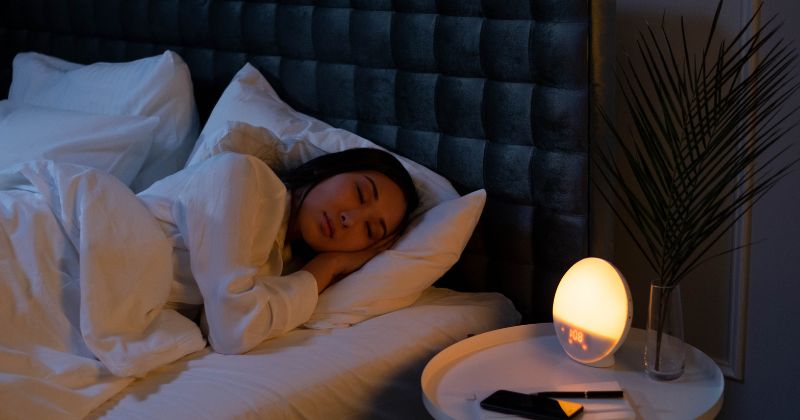
Tip 5: Utilise Night Time Rates
Using nighttime rates can influence your decision on whether to keep the heating on low for longer. Many energy providers offer lower rates during off-peak hours, typically at night.
Heating your home at these times can help you maintain a warm environment more cost-effectively. This strategy is particularly effective in homes with good insulation, as overnight heat reduces the need for high heating during the day.

Tip 6: Dress for the Season
Dressing appropriately for the season can help you decide whether it’s better to have the heating on low for longer. Wearing warm clothing inside during colder months lets you set your heating system at a lower temperature.
This reduces the need for your heating to work harder, saving energy and costs. By layering up, you keep comfortable without relying on high heating settings. This approach can answer whether leaving the heating on all day is cheaper since it reduces energy usage.
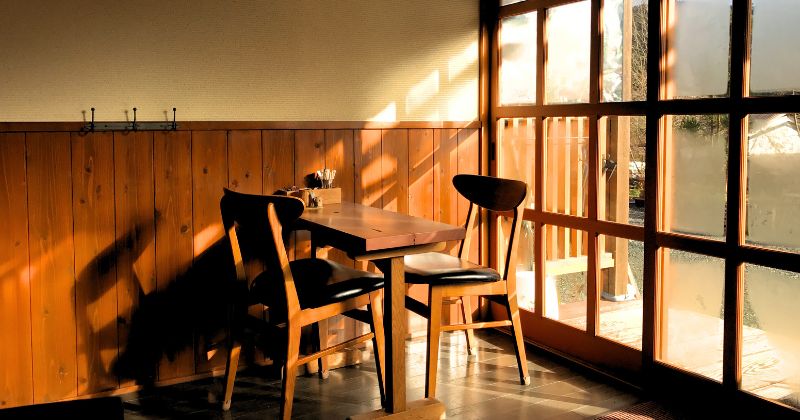
Tip 7: Sunlight Power
Depending on the orientation of your room, and how much sun it gets can significantly impact the amount of heating you need. This method helps keep your house warmer without requiring constant heating. As a result, you can maintain a lower thermostat setting, potentially reducing your energy bills.
This strategy is particularly effective in well-insulated homes where heat retention is optimised. Leveraging sunlight is a simple and cost-effective way to enhance efficiency and comfort during the day. By making the most of natural sunlight, you can achieve a warmer home environment with less reliance on your heating system.
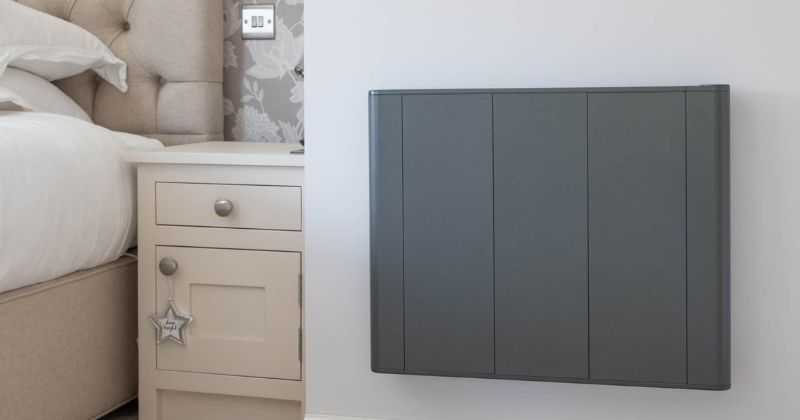
Tip 8: Smart Tech Takes Control
Smart technology can significantly influence whether it is better to have heating on low for longer. Smart thermostats and radiators allow precise control over your home’s temperature from anywhere. This technology adjusts the heat based on your daily schedule and outside temperature, maintaining comfort while reducing waste.
By keeping your home at a consistently low temperature, smart tech helps determine if it is cheaper to leave the heating on all day. These systems ensure that energy is used only when necessary, helping to decide if it is more economical to leave the heating on.
Smart devices provide a convenient way to manage your heating efficiently and could be a key to cost-effective home warming.
Tip 9: Heat Zones
Using heat zones in your home is a smart way to manage heating efficiently. This method involves heating only specific areas of your home where warmth is needed, rather than heating the entire space. By setting up different zones, you can control where and when heat is applied, based on the use of each area.
For example, living areas can be kept warm during the evening, while bedrooms can be heated just before bedtime. This targeted heating approach allows for a lower overall temperature in your home, which reduces energy consumption and can lead to significant savings on your heating bills.
In essence, heat zones makes more economical and tailor the comfort of your home to fit your lifestyle more closely.
Upgrade Your Home Heating with Energy-Efficient Electric Radiators
Effective home management revolves around strategic technology use and simple lifestyle adjustments. Ensuring your home is well-insulated and your electric radiators are correctly placed can dramatically increase energy efficiency.
Electric Radiators with programmable thermostats and smart technology allow precise temperature control, significantly reducing energy waste and lowering bills.
Cost savings can be achieved by adjusting heating to off-peak rates, using natural sunlight during the day, dressing warmly, and applying zone heating to only warm-occupied areas of your home. These steps not only enhance comfort but also optimise energy use.
Practical Steps for Efficient Heating:
- Upgrade your home’s insulation.
- Install and program electric radiators with smart thermostats.
- Utilise lower nighttime energy rates.
- Invest natural sunlight.
- Implement zone heating to focus warmth where it’s needed.
By following these tips, you can maximise the efficiency of your electric radiator, ensuring your home stays warm while keeping energy costs in check.
Choose the Best Electric Radiators for Efficient Home Heating
Selecting the right electric radiator is essential for efficient home heating and reducing electricity costs. At Best Electric Radiators, we offer a range of high-quality electric radiators tailored to meet various household needs.
“Is it more cost effective to keep heat on?” The answer can vary, but our electric radiators are designed to provide cost-effective heating solutions by maintaining consistent warmth with smart energy use.
Our team is ready to assist you in choosing the most suitable electric radiators for your home. Contact us for a personalised strategy tailored to your specific requirements.
We will guide you through the selection process, ensuring you find the most efficient and cost-effective solutions.
FAQs
Is It More Cost Effective To Keep Heat On
It depends on your insulation and heating system. Generally, keeping a low, consistent temperature is more cost-effective for well-insulated homes.
What Is the Most Economical Way To Use Central Heating?
Set your thermostat to a lower temperature. Use programmable settings to heat your home only when needed. Ensure good insulation to retain heat and reduce energy waste.
What Temperature Should I Heat My House To Save Money?
Set your thermostat to around 18°C to 20°C while awake. Lower it when asleep or away from home to save energy and reduce costs.
What Is the Best Amount of Time To Have Heating On?
To optimise energy use and comfort, set your heating to come on 30 minutes before you wake up and turn it off 30 minutes before bed.
If your home is empty during the day, it’s also efficient to turn off the heating during those hours. This strategy helps maintain comfort while minimising energy waste.
What Is the Best Temperature To Leave Heating On?
The World Health Organisation recommends heating your home to 18°C in the winter. The Energy Saving Trust suggests maintaining a temperature between 18°C and 21°C for optimal comfort and energy efficiency.


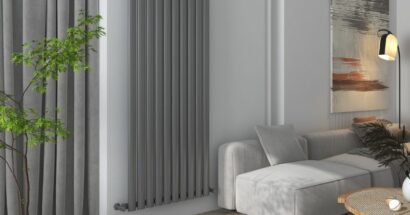


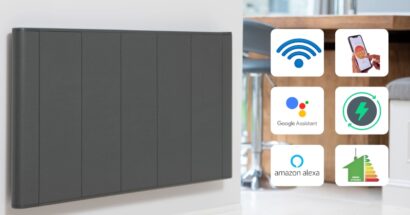
Leave a Reply